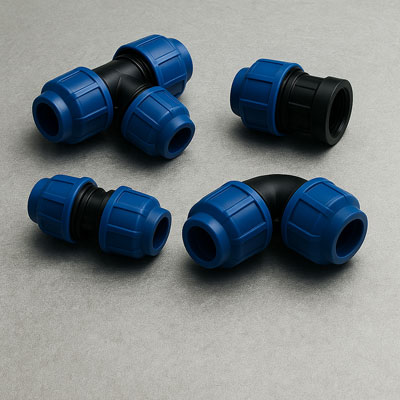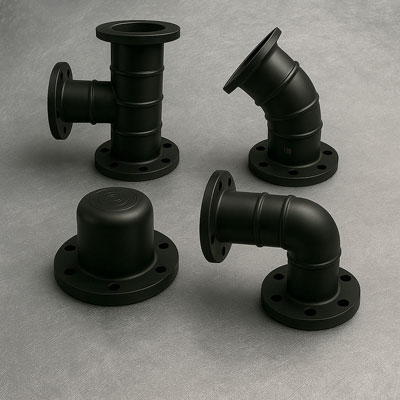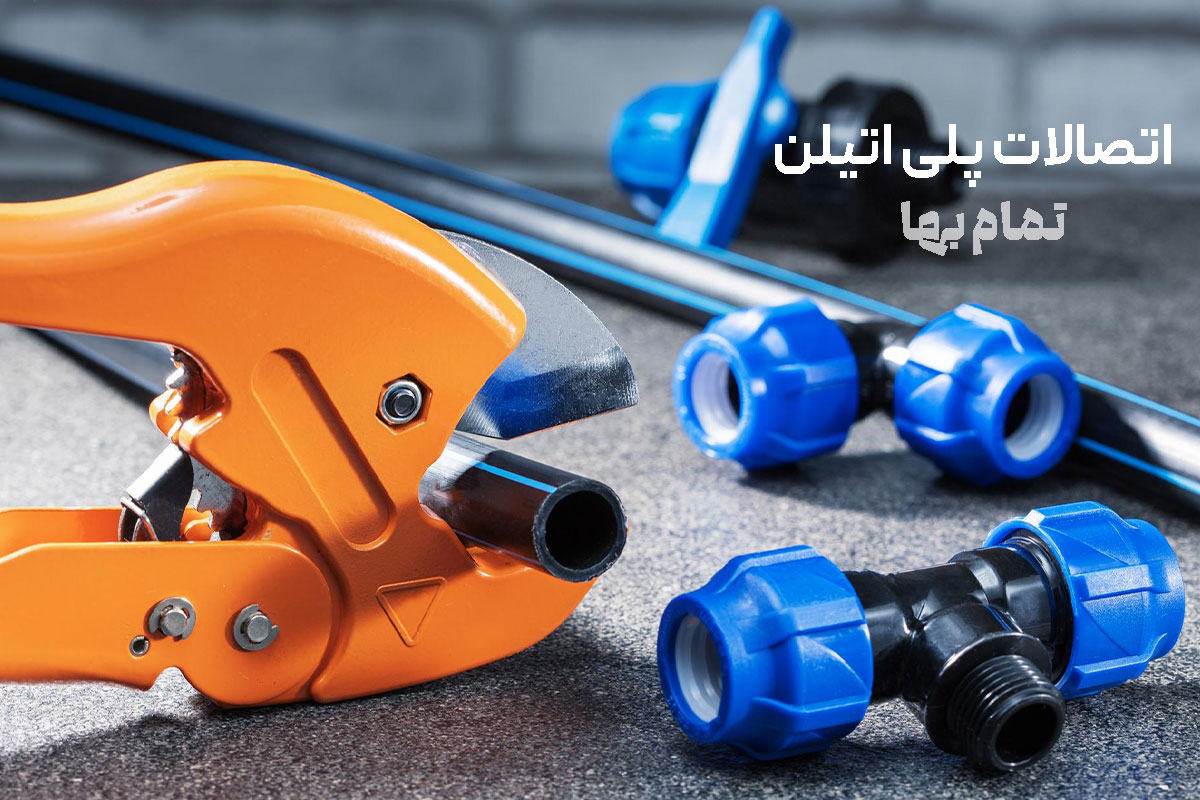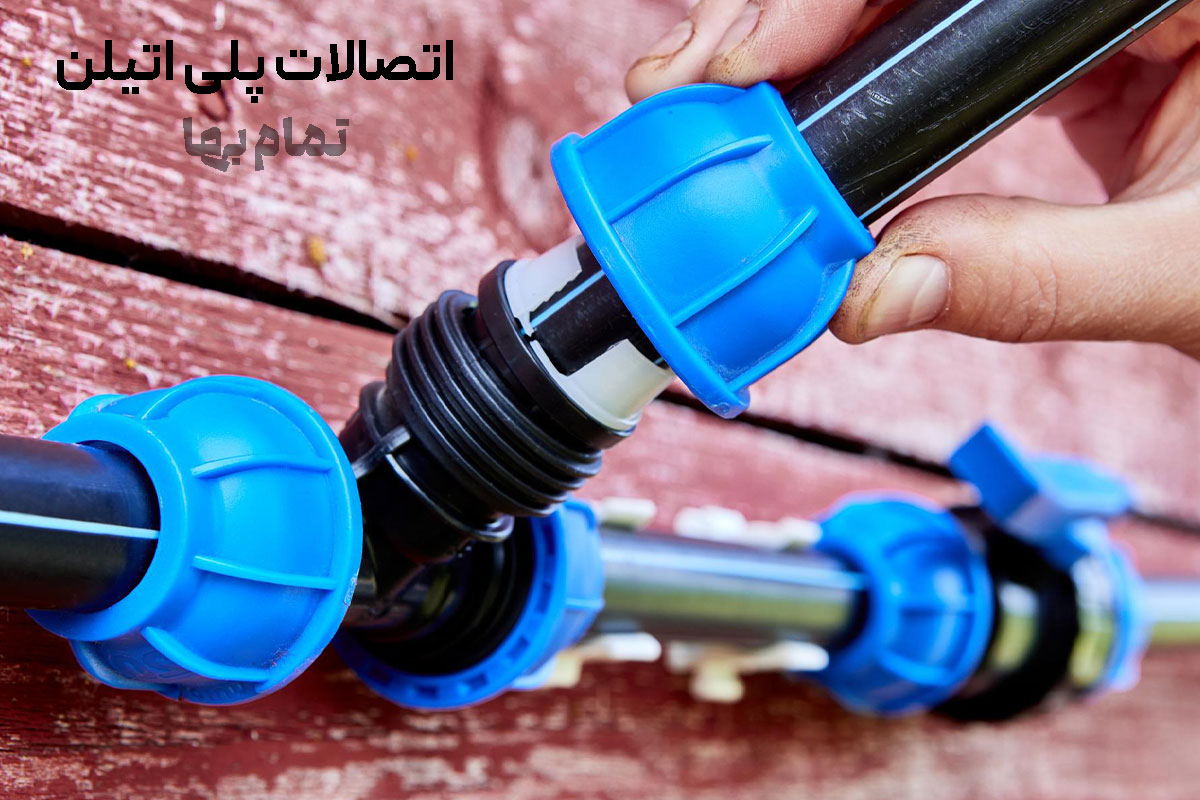Polyethylene fittings, as strategic nodes in pipeline networks, play a role far beyond merely “joining two pipes”; these small components safeguard safety, service life, and return on investment in projects ranging from the transfer of vital fluids to the conveyance of abrasive slurries. In the last decade, with advances in new grades such as PE100-RC, the requirements for the design, manufacturing, and quality control of these fittings have been transformed and subjected to stricter standards; hence, a precise understanding of the structure, types, advantages, and execution challenges of polyethylene fittings is essential for engineers, contractors, and operators.
Nature and structure of the polyethylene used in fittings
Pipe-grade polyethylene (HDPE) is produced with high molecular weight and a narrow molecular weight distribution to simultaneously provide desirable tensile strength, toughness, and chemical resistance. In fittings, stress concentrations in the weld area are significantly higher than in the pipe body; therefore, leading manufacturers use PE100 or PE100-RC resins whose slow crack growth (SCG) index is at least 8,760 hours in the FNCT test. This figure ensures that the fitting can withstand environmental stress cracking under long-term pressure and thermal cycles.
Common types of polyethylene fittings
In practice, engineers employ the following five main families, each optimized for a specific pressure and size range: butt-fusion welded, electrofusion, threaded mechanical, flanged, and special molded (Injection Fittings). The correct choice among these families depends on pipe size, design pressure, operating conditions, access to power or welding equipment, and testing requirements.
Type of joint | Nominal diameter (mm) | Nominal pressure (bar) | Sealing method | Reference standard | Repairability
Butt-fusion | 63–2000 | 6 to 25 | Full surface co-fusion | ISO 21307, EN 12201-3 | Difficult
Electrofusion | 20–630 | 4 to 25 | Heating wire inside coupler | ISO 8085-3 | Moderate
Threaded mechanical | 20–110 | 4 to 16 | Sealing ring/O-ring | DIN 8076 | Easy
Flanged | 90–2000 | up to 25 | Elastomeric gasket | EN 1092-1 | Easy
Reinforced molded | 400–1200 | up to 16 | Co-fusion + composite core | Manufacturer’s spec | Difficult
Manufacturing processes and quality control
The main stages include injection molding or machining of primary parts, uniform pre-heating, butt-fusion welding or insertion of the electrofusion element, and finally non-destructive testing (NDT). In advanced facilities, each welding machine is equipped with internal memory that stores temperature, pressure, time, and operator code; these data are archived in the project’s quality certificates (WPS/PQR) so the joint can be traced throughout the network’s life cycle. Hydrostatic tests at 1.5× working pressure and Charpy impact tests at −20 °C are among the mandatory clauses of EN 12201.
Key applications and engineering considerations
- Urban and rural water distribution networks: integral fusion joints ensure zero leakage and resistance to water-hammer acceleration up to 100 m/s².
- Natural gas lines: electrofusion is the first choice up to 12 bar due to barcode traceability, computer control, and mechanical locking.
- Corrosive chemical processes: combining the intrinsic chemical resistance of PE with an internal E-CTFE lining in some molded fittings enables service lives over 50 years at pH 2–14.
- Mineral slurry transfer: adding carbon black and engineering-grade antioxidants to the base resin reduces volumetric wear by up to 40% compared to carbon steel.
-
Marine applications: low density (0.96 g/cm³) allows lines to float during installation; after flooding and sinking the pipe, flexible fittings accommodate wave-induced deformations without failure.








